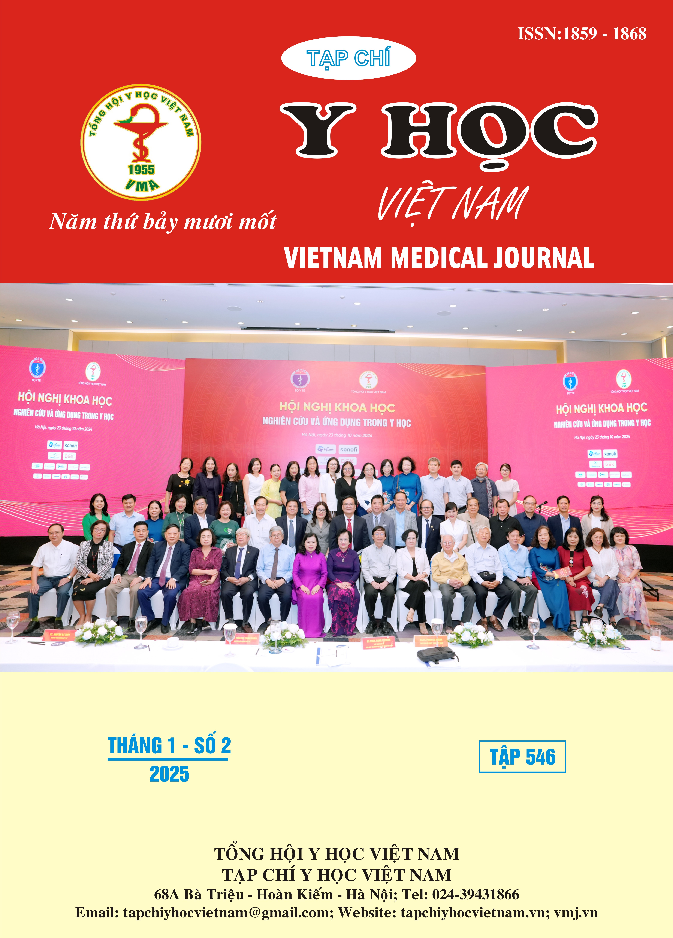SIGNS OF EARLY CLASS II MALOCCLUSION IN PRIMARY DENTITION (LONGITUDINAL STUDY ON MODELS)
Main Article Content
Abstract
Background: According to Angle's classification, the first molar relationship in the permanent dentition is categorized into three types: Class I, Class II, and Class III. The class I molar relationship is considered normal, while the other two types are considered abnormal. Numerous studies indicate that class II molar relationship (Class II malocclusion) is fairly common in the population. When Class II malocclusion is identified, monitored, and intervented in a suitable time, most of mild cases are afforded the opportunity to develop into a normal malocclusion relationship. In more severe instances, cause by skeletal discrepancies, early intervention may change growth patterns and help the malocclusion become lighter . The early detection and timely intervention of Class II malocclusion necessitate that practitioners recognize the initial signs to monitor high-risk cases and implement appropriate interventions helps improve the success rate of treatment. Globally, there is a shortage of longitudinal studies examining the dental and dental arch factors in primary dentition related to the Class II malocclusion in permanent dentition. Furthermore, in Vietnam, no research has been conducted on this topic concerning the Vietnamese population. Therefore, we conducted the study titled "Signs of early Class II malocclusion in primary Dentition (Longitudinal study on models)." Objectives: To compare the factors of tooth size, arch size, spacing in the dental arch of the primary dentition, and the relationship between the anterior and posterior teeth in the primary dentition between the group with class II molar relationship and the group with class I molar relationship in the permanent dentition." Materials and methods: The study followed 64 children, evaluating a total of 128 dental arches (64 upper and 64 lower) from primary dentition (T1) to the permanent dentition stage (T3). It accesses 23 variables related to tooth size, dental arch size, tooth size correlation, and dental arch relationship between the two jaws at the T1 stage in relation to the class II molar relationship in the permanent dentition. Results: In comparison to the group with normal class I occlusal correlation, the group with class II malocclusion exhibited specific characteristics regarding dental measures and correlations in the primary dentition, such as increased overbite and predominantly second deciduous molar distal step plane. The differences in these factors were statistically significant (p<0.001). The variables of tooth size, tooth size correlation, dental arch size, and dental arch gap between the class II and class I groups were found no significant different (p>0.05). Conclusion: Class II malocclusion presents early detectable signs in the primary dentition, including increased overbite and frequent second deciduous molar distal step plane. The findings of this study facilitate early detection and diagnosis and provide a foundational basis for identifying individuals at high risk of future class II malocclusion, thereby supporting timely monitoring and intervention strategies.
Article Details
Keywords
Class II malocclusion, early signs in primary dentition.
References
2. Đống Khắc Thẩm. Chỉnh hình răng mặt. Nhà xuất bản Y học TP. Hồ Chí Minh; 2004.
3. Baccetti T, Franchi L, McNamara JAJ, Tollaro I. Early dentofacial features of Class II malocclusion: a longitudinal study from the deciduous through the mixed dentition. Am J Orthod Dentofacial Orthop.
4. Baume LJ. Physiological tooth migration and its significance for the development of occlusion; the biogenesis of accessional dentition. J Dent Res. Jun 1950;29(3):331-7.
5. Bishara SE, Hoppens BJ, Jakobsen JR, Kohout FJ. Changes in the molar relationship between the deciduous and permanent dentitions: a longitudinal study. Am J Orthod Dentofacial Orthop. Jan 1988;93(1):19-28.
6. Proffit WR. Contemporary Orthodontics. 6th ed. Mosby; 2018.
7. Varrela J. Occlusal development in the primary dentition of normal and Class II individuals. J Dent Res 1992. 1992;71(2):745.
8. Varrela J. Early developmental traits in class II malocclusion. Acta Odontol Scand. Dec 1998;56(6):375-7.


